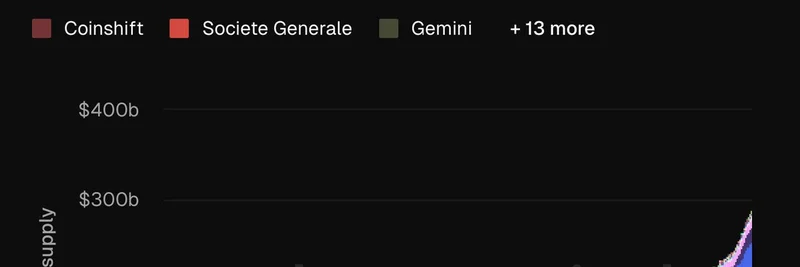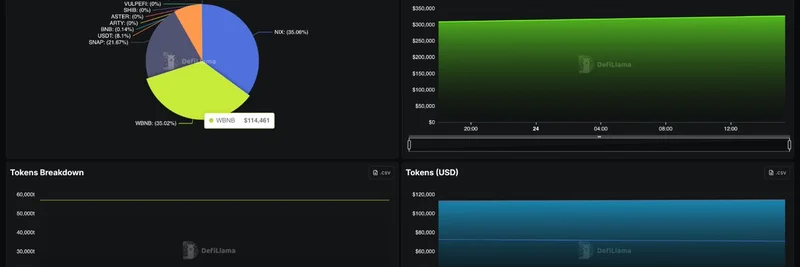In the fast-paced world of crypto, stablecoins are the unsung heroes keeping things steady amid the volatility. They're digital dollars (or other currencies) pegged to real-world assets, making them essential for trading, lending, and everything in between on blockchain networks. Recently, a post from Token Terminal on X caught our eye, highlighting just how massive this sector has grown—and the deeper implications for decentralized finance (DeFi).
The chart shared in the post paints a vivid picture of stablecoin supply evolution since 2018. Starting from nearly zero, the total supply has skyrocketed to over $300 billion by 2024, with Tether leading the pack in bright green, followed closely by Circle in blue. Other players like Ethena, Sky, and PayPal chip in smaller slices, but the overall trend is clear: explosive growth, especially post-2020.
But the real bombshell in the tweet isn't just the on-chain numbers—it's about the off-chain muscle these issuers wield. Token Terminal points out that the amount of off-chain dollars these companies control, either directly or indirectly, blows past $1 trillion. That's a staggering figure, dwarfing the stablecoin supply itself.
Breaking Down the Off-Chain Control
Stablecoins like USDT (Tether) or USDC (Circle) are backed by reserves—think cash, bonds, or other assets held in traditional bank accounts or investments. When you mint a stablecoin, you're essentially depositing fiat money with the issuer, who then issues the digital equivalent on the blockchain. So, that $300+ billion in circulating stablecoins reflects an even larger pool of real-world assets under management. The $1 trillion estimate likely includes not just direct reserves but also indirect influences through partnerships, investments, and ecosystem ties.
Someone might argue, as the post anticipates, "But no value is created if dollars are simply moved from a database to a blockchain." Fair point—at the moment of transfer, it's just a shift in format. No new wealth magically appears.
Where the Magic Happens: Entering DeFi
Here's where it gets exciting. Once those dollars hit the blockchain as stablecoins, they don't just sit idle. They flow into DeFi protocols—decentralized apps for lending, borrowing, trading, and yield farming. This is where "new" entities start benefiting. Think about it: liquidity providers earn fees, borrowers access capital without banks, and traders swap assets seamlessly. Protocols like Aave, Uniswap, or even meme token launchpads on Solana thrive on this stable liquidity.
For meme token enthusiasts, this is huge. Meme coins often rely on quick, low-cost trades in DeFi pools. Without stablecoins providing that stable base pair (like USDC for swapping into the latest viral token), the meme economy would grind to a halt. It's like pouring rocket fuel into the fun side of crypto, enabling everything from pump-and-dump hype to genuine community-driven projects.
Why This Matters for Blockchain Practitioners
If you're building or trading in the meme space, understanding stablecoin dynamics is key. Tether's dominance, for instance, has sparked debates on transparency and risks—if something goes wrong with reserves, it could ripple through DeFi. On the flip side, newcomers like Ethena (with its synthetic dollar) or PayPal's entry signal more innovation, potentially bringing in fresh liquidity for meme experiments.
Token Terminal's data underscores a maturing market. As stablecoin supply grows, so does the bridge between traditional finance and crypto. It's not just about holding value; it's about unlocking it in ways banks never could. Keep an eye on these issuers—they're the gatekeepers to the next trillion in crypto value.
Whether you're a DeFi degen or a meme token curator, this shift highlights opportunities. Dive deeper into tools like Token Terminal for real-time analytics, and stay ahead in the blockchain game.



